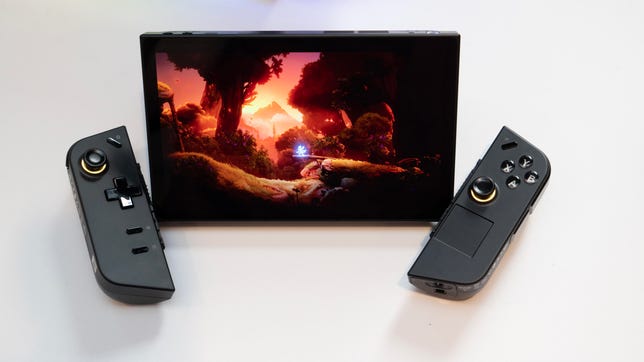
SCORE
Lenovo Legion Go
- Large 8.8-inch display
- Windows OS means multiple game store support
- Detachable wireless controllers
- Built-in kickstand
This is exactly what I expected back in 2017, when the Switch made its stunning debut. It’s just taken a while to get here (I remember the first PC game handheld I reviewed way back in 2013, the Razer Edge, and having similar future feelings). But Lenovo’s massive kitchen-sink handheld solution is a classic example of how much work the Windows side of handheld gaming still needs.
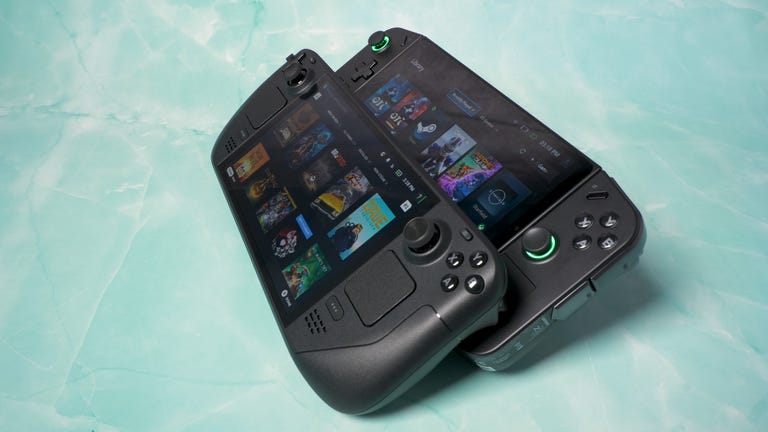
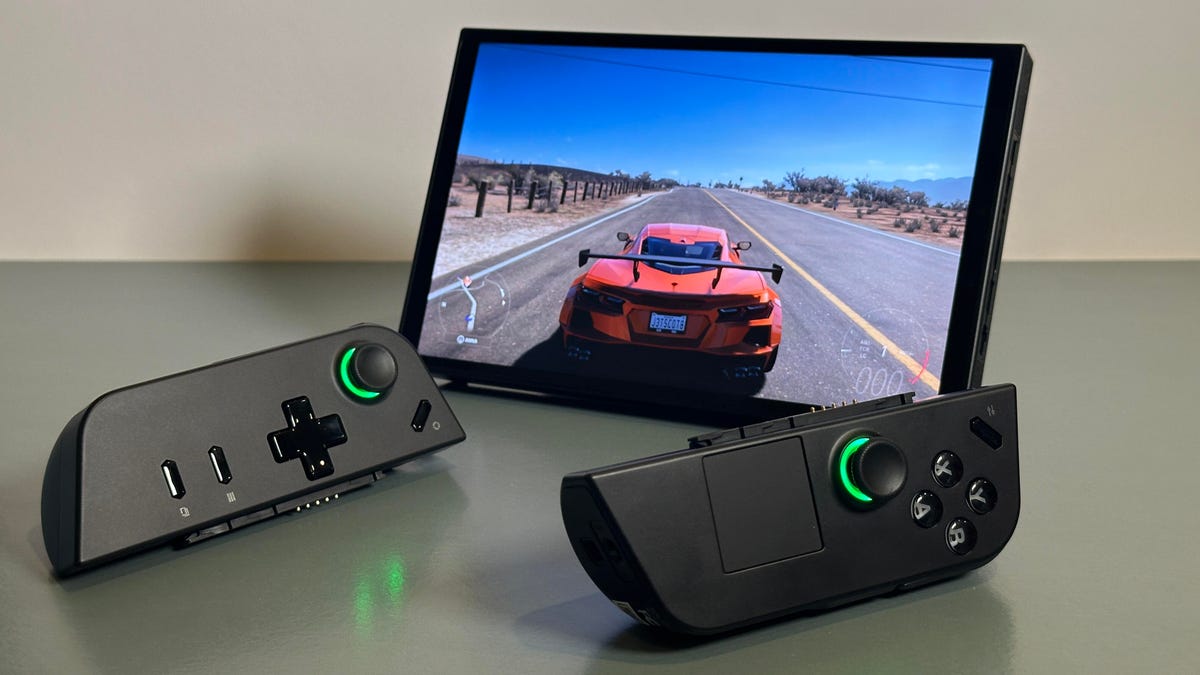
The Lenovo Legion Go has removable controllers and a kickstand in a Windows game handheld — which sounds great, but the execution is mixed.
Good stuff: The display, kickstand and controllers
Before I get critical, the Legion Go has some perks. Its 8.8-inch display is great for seeing games in full detail despite making it a huge 1.8-pound beast of a handheld that feels more like a small laptop at times. Even though it’s not an OLED panel, it’s vivid and sharp. The 2,560×1,600-pixel resolution is bigger and more detailed than the Steam Deck’s 1,280×800 display. It matters particularly for RPGs and games with lots of text that are designed for larger laptops and monitors. I sometimes squint with Steam Deck, but with the Legion Go it all looks good. But I found myself downscaling the resolution when playing some games to allow for better performance.

The wireless Legion Go controllers are complex, but they remind me of what I’d hoped the Steam Deck would have.
Bad stuff: Windows, game compatibility
I’m not a PC gamer, but I love handheld gaming devices and have played on them for decades. The Legion Go isn’t a handheld game system to me — it’s a handheld Windows PC. The capabilities of the Legion Go are potentially infinite in that regard, since you could connect it to a monitor, add a keyboard and mouse and run basically any Windows app. Your mileage there would certainly vary, but the Legion Go’s specs are solid: 16GB of RAM, two USB 4.0 ports, a microSD card reader and the AMD Ryzen Z1 Extreme processor (similar to what powers Asus’ ROG Ally Windows gaming handheld, which arrived earlier this year).
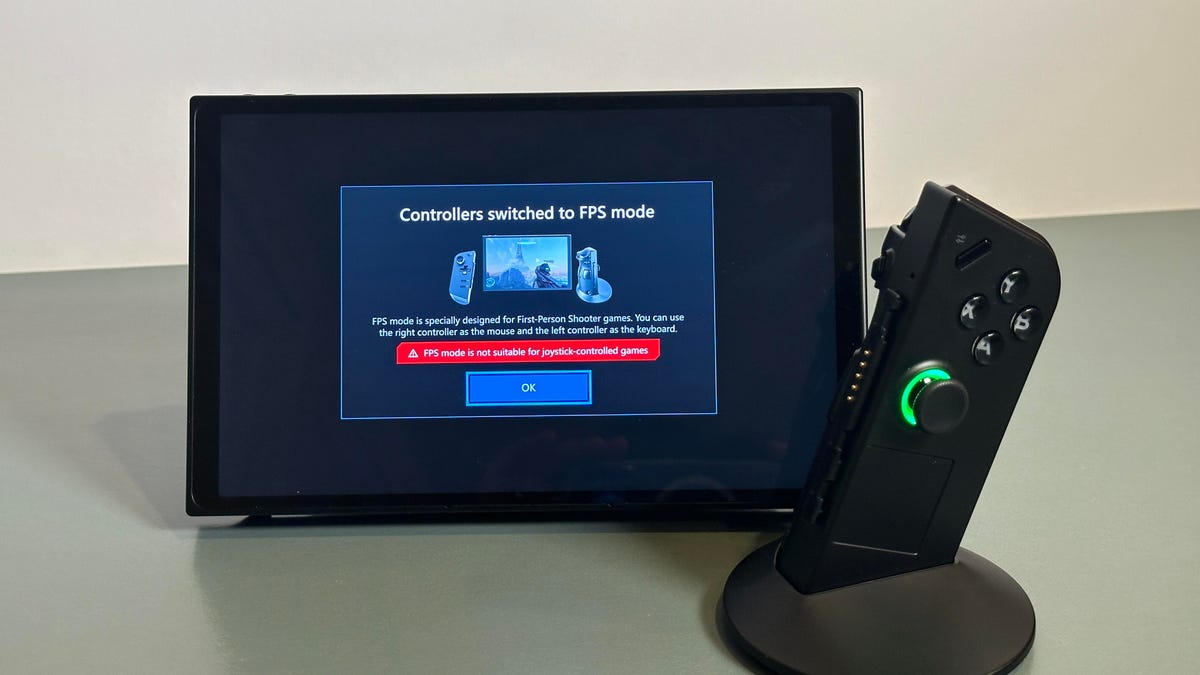
If you enter FPS mode, remember to switch the controller back afterward!
On the other hand, Elden Ring ran as well as it does on the Steam Deck, but larger. Forza Horizon 5 looked great, too. But it’s a trial-and-error process of finding games that work, adjusting settings and even seeing if the proper drivers are installed. I had to go to Lenovo’s site to make sure the Legion Go had the proper drivers, and even then I wasn’t entirely sure.
Basically, I was thrown way out of my comfort zone. Windows 11 isn’t made for small-screened game handhelds, and Microsoft seems to have done none of the work to try to make devices like the Legion Go fun to use. Lenovo has done its best via its software, but it feels like a glued-on solution. The Steam Deck is comforting by comparison: a dedicated OS linked to Steam, games that are clearly marked as being Steam Deck-ready, and software updates that run without going on a scavenger hunt. I’ve had far more luck running games smoothly on the OLED Steam Deck than on the Legion Go.
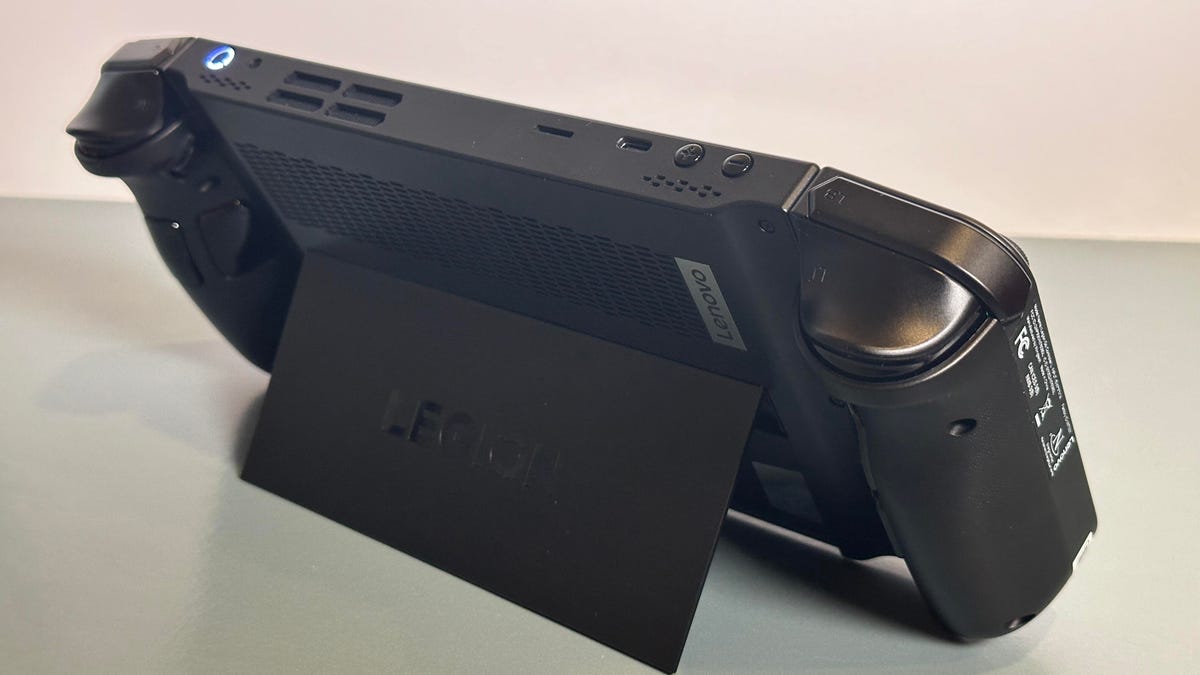
I do love the solid kickstand, which helps because this is a heavy handheld.
But I also had moments where the Go’s optical mouse-mode controller seemed to be active even when the switch wasn’t flipped. I also had occasions where the controllers didn’t seem to activate when undocked.
The Legion Go’s cooling fans are also quite loud. They’re adjustable, but even in the quietest setting they whirred a lot more than the Steam Deck’s ever have. The Legion Go’s battery life, despite having a 49-watt-hour battery, drained faster than I would have liked. While recording my video for the Legion Go one afternoon at CNET, the battery got to 50% a lot faster than the Steam Deck over the same span, around a couple of hours.


